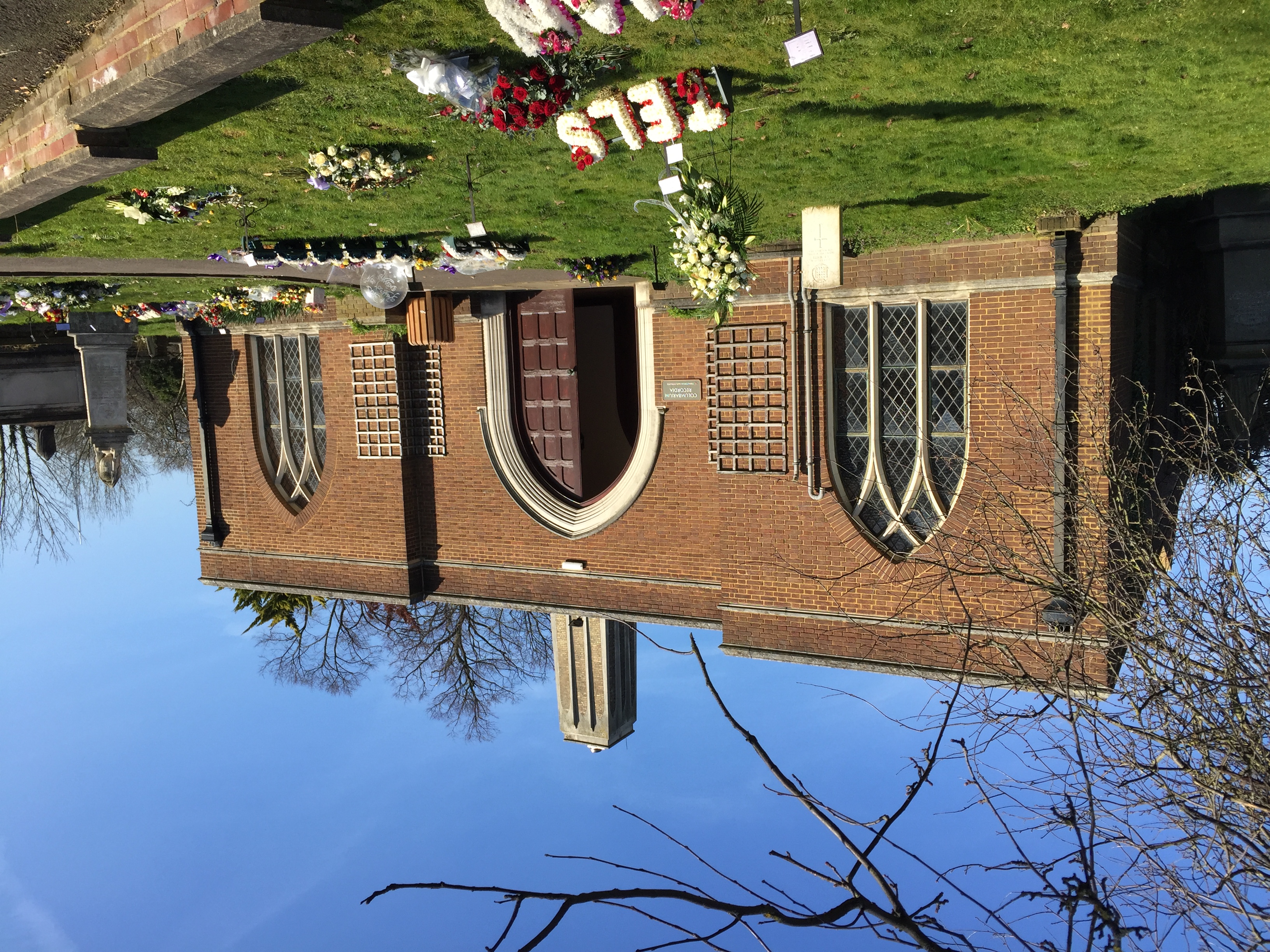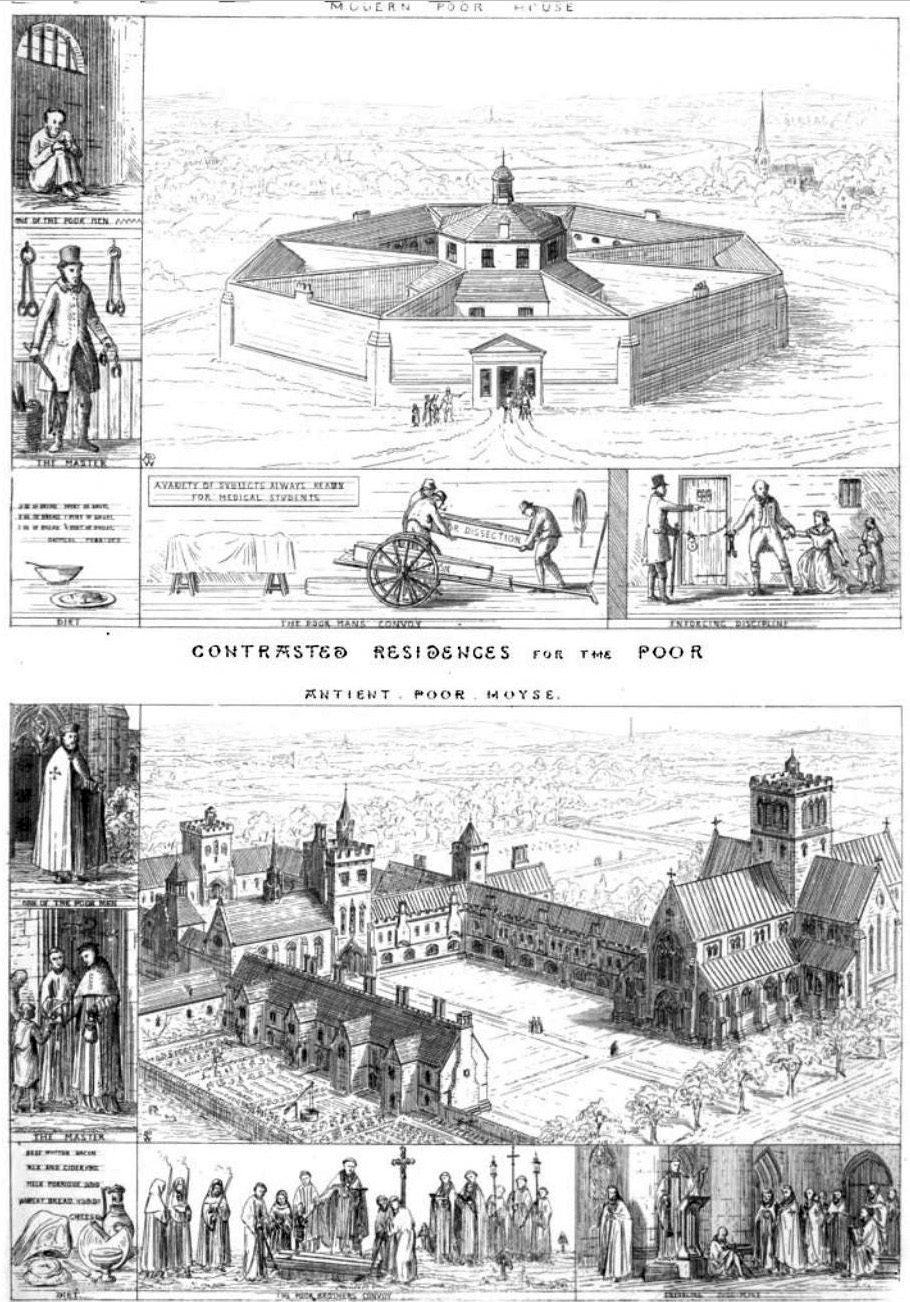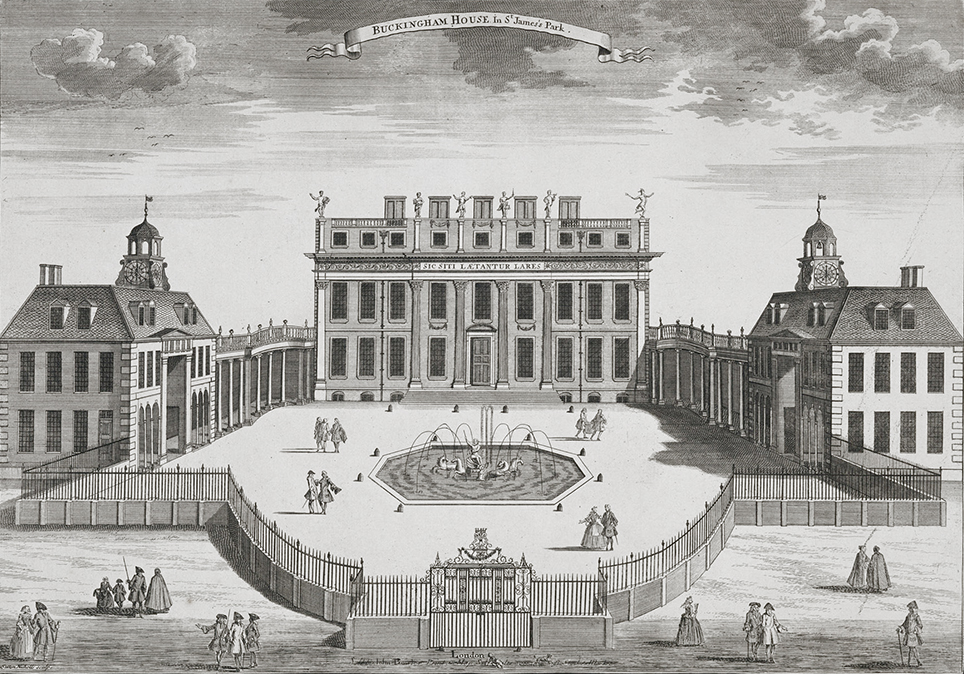|
J. G. Crace
John Gregory Crace (26 May 1809 – 13 August 1889) was a British Interior decoration, interior decorator and author. Early life and education The Crace family had been prominent London Interior decoration, interior decorators since Edward Crace (1725–1799), later keeper of the royal pictures to George III of the United Kingdom, George III, established a business in 1768. John Gregory Crace, Edward Crace's great-grandson, was the elder of two surviving sons of Frederick Crace (1779–1859), interior decorator to the then George IV of the United Kingdom, Prince Regent and a collector of maps and prints. His mother, Augusta Harrop Gregory, was the daughter of John Gregory, a London magistrate and treasurer of the Whig Club. Born at 34 Curzon Street in London, Crace was educated at the schools of Dr Crombie in Greenwich and Mr Pollard in South Kensington. Career Crace commenced work as an assistant to his father in 1825, assisting on commissions from George IV of the United ... [...More Info...] [...Related Items...] OR: [Wikipedia] [Google] [Baidu] |
John Dibblee Crace
John Dibblee Crace (1838 – 18 November 1919) was a distinguished British interior designer who provided decorative schemes for the British Museum, the National Gallery (London), National Gallery, the Royal Academy, Tyntesfield and Longleat among many other notable buildings. Life and work Crace was the eldest of eleven surviving children of John Gregory Crace (designer), John Gregory Crace (1809–1889), interior decorator and author, and his wife, Sarah Jane Hine Langley (1815–1894), the daughter of John Inwood Langley (1790–1874) of Greenwich, a civil servant at the Greenwich Hospital (London), Royal Naval Hospital. His father was renowned as a decorator who was in partnership for eight years with Augustus Welby Northmore Pugin, A.W.N. Pugin, the eminent Gothic revival architect, and was head of a decorating firm founded in 1768 by his great-great-grandfather Edward Crace, a coach-decorator and keeper of the king's pictures. Edward and his son Frederick were responsible fo ... [...More Info...] [...Related Items...] OR: [Wikipedia] [Google] [Baidu] |
Crace Wall Decoration - Frederick Smallfield CROP
Crace may refer to: People * Edward Kendall Crace (1844–1892), Australian pastoralist * Sir John Gregory Crace, KBE, CB (1887–1968), officer in Royal Navy and Royal Australian Navy * Jim Crace (born 1946), English writer * John Crace (writer) (born 1956), British journalist and critic * Lauren Crace (born 1986), English actress English interior designers * Edward Crace (1725–1799), English interior designer and Keeper of the King's Pictures * John Crace (designer) (1754–1819), eldest son of Edward Crace, English interior designer * Frederick Crace (1779–1859), English interior decorator and collector of maps and prints, eldest son of John Crace * John Gregory Crace (designer) (1809–1889), English interior designer and author, elder surviving son of Frederick Crace * John Dibblee Crace (1838–1919), English interior designer and author, eldest son of John Gregory Crace Places * Crace, Australian Capital Territory Crace () is a suburb of Canberra, Australia in ... [...More Info...] [...Related Items...] OR: [Wikipedia] [Google] [Baidu] |
1889 Deaths
Events January * January 1 ** The total solar eclipse of January 1, 1889 is seen over parts of California and Nevada. ** Paiute spiritual leader Wovoka experiences a Vision (spirituality), vision, leading to the start of the Ghost Dance movement in the Dakotas. * January 4 – An Act to Regulate Appointments in the Marine Hospital Service of the United States is signed by President Grover Cleveland. It establishes a Commissioned Corps of officers, as a predecessor to the modern-day U.S. Public Health Service Commissioned Corps. * January 8 – Herman Hollerith receives a patent for his electric tabulating machine in the United States. * January 15 – The Coca-Cola Company is originally Incorporation (business), incorporated as the Pemberton Medicine Company in Atlanta, Georgia (U.S. state), Georgia. * January 22 – Columbia Phonograph is formed in Washington, D.C. * January 30 – Mayerling incident: Rudolf, Crown Prince of Austria, and his mistress Baroness Mary Vetsera co ... [...More Info...] [...Related Items...] OR: [Wikipedia] [Google] [Baidu] |
1809 Births
Events January–March * January 5 – The Treaty of the Dardanelles, between the United Kingdom of Great Britain and Ireland and the Ottoman Empire, is concluded. * January 10 – Peninsular War – French Marshal Jean Lannes begins the Second Siege of Zaragoza, Siege of Zaragoza. * January 14 – The Apodaca–Canning treaty is signed in London between Britain and Spain * January 16 – Peninsular War – Battle of Corunna in Galicia (Spain): The British (under General Sir John Moore (British Army officer), John Moore, who is killed) resist an attempt by the French (under Jean-de-Dieu Soult, Marshal Soult) to prevent them embarking. * February 3 – The Illinois Territory is created from the western part of the Indiana Territory. * February 11 – Robert Fulton patents the steamboat in the United States. * February 12 – Charles Darwin and Abraham Lincoln are born. * February 17 – Miami University (Ohio) is established ( ... [...More Info...] [...Related Items...] OR: [Wikipedia] [Google] [Baidu] |
West Norwood Cemetery
West Norwood Cemetery is a rural cemetery in West Norwood in London, England. It was also known as the South Metropolitan Cemetery. One of the first private landscaped cemeteries in London, it is one of the " Magnificent Seven" cemeteries of London, and is a site of major historical, architectural and ecological interest. Its grounds are a mixture of historic monumental cemetery and modern lawn cemetery, but it also has catacombs, cremation plots and a columbarium for cinerary ashes. The cemetery's crematorium still operates, but all the conventional and cremated remains burial plots have been allocated and hence it is closed to new burials pending further agreement under current burial legislation. Location The Main gate is located on Norwood Road near the junction with Robson Road, where Norwood Road forks into Norwood High Street and Knights' Hill. It is in the London Borough of Lambeth ( SE27). The local authority is the current owner. The site, with some of its neighbo ... [...More Info...] [...Related Items...] OR: [Wikipedia] [Google] [Baidu] |
Herne Hill
Herne Hill () is a district in South London, approximately four miles from Charing Cross and bordered by Brixton, Camberwell, Dulwich, and Tulse Hill. It sits to the north and east of Brockwell Park and straddles the boundary between the London borough, boroughs of London Borough of Lambeth, Lambeth and London Borough of Southwark, Southwark. There is a road of the same name in the area (which is part of the A215 road, A215), as well as a Herne Hill railway station, railway station. Toponymy In John Rocque's Map of London, 1746, Rocque's 1746 map, the area is shown as "Island Green", probably reflecting the presence of the River Effra and smaller tributaries.''The Story of Norwood'' J.B. Wilson & H.A. Wilson Early references to the area also use the form "Ireland Green". The earliest documented reference to "Herne Hill" is in two fire insurance policies issued by the Sun Alliance (company), Sun Insurance Company in 1792 (where the spelling is "Hearns" and "Herns" Hill). Hist ... [...More Info...] [...Related Items...] OR: [Wikipedia] [Google] [Baidu] |
Greenwich Hospital (London)
Greenwich Hospital was a permanent home for retired sailors of the Royal Navy, which operated from 1692 to 1869. Its buildings, initially Greenwich Palace, in Greenwich, London, were later used by the Royal Naval College, Greenwich and the University of Greenwich, and are now known as the Old Royal Naval College. The word "hospital" was used in its original sense of a place providing hospitality for those in need of it, and did not refer to medical care, although the buildings included an infirmary which, after Greenwich Hospital closed, operated as Dreadnought Seaman's Hospital until 1986. The foundation which operated the hospital still exists, for the benefit of former Royal Navy personnel and their dependants. It now provides sheltered housing on other sites. History The hospital was created as the Royal Hospital for Seamen at Greenwich on the instructions of Mary II of England, Queen Mary II, who had been inspired by the sight of wounded sailors returning from the Battles ... [...More Info...] [...Related Items...] OR: [Wikipedia] [Google] [Baidu] |
Augustus Pugin
Augustus Welby Northmore Pugin ( ; 1 March 1812 – 14 September 1852) was an English architect, designer, artist and critic with French and Swiss origins. He is principally remembered for his pioneering role in the Gothic Revival architecture, Gothic Revival style of architecture. His work culminated in designing the interior of the Palace of Westminster in Westminster, London, and its clock tower, the Elizabeth Tower (formerly St. Stephen's Tower), which houses the bell known as Big Ben. Pugin designed many churches in England, and some in Ireland and Australia. He was the son of Augustus Charles Pugin, Auguste Pugin, and the father of E. W. Pugin, Edward Welby Pugin, Cuthbert Welby Pugin, and Peter Paul Pugin, who continued his architectural and interior design firm as Pugin & Pugin. Biography Pugin was the son of the French draughtsman Augustus Charles Pugin, Auguste Pugin, who had immigrated to England as a result of the French Revolution and had married Catherine Welb ... [...More Info...] [...Related Items...] OR: [Wikipedia] [Google] [Baidu] |
Sir Charles Barry
Sir Charles Barry (23 May 1795 – 12 May 1860) was an English architect best known for his role in the rebuilding of the Palace of Westminster (also known as the Houses of Parliament) in London during the mid-19th century, but also responsible for numerous other buildings and gardens. He is known for his major contribution to the use of Italianate architecture in Britain, especially the use of the Palazzo style architecture, Palazzo as basis for the design of country houses, city mansions and public buildings. He also developed the Italian Renaissance garden style for the many gardens he designed around country houses.Bisgrove, p. 179 Background and training Born on 23 May 1795Barry p. 4 in Bridge Street, Westminster (opposite the future site of the Big Ben, Clock Tower of the Palace of Westminster), he was the fourth son of Walter Edward Barry (died 1805), Stationery, a stationer, and Frances Barry (née Maybank; died 1798). He was Baptism, baptised at St Margaret's, Wes ... [...More Info...] [...Related Items...] OR: [Wikipedia] [Google] [Baidu] |
July Revolution
The French Revolution of 1830, also known as the July Revolution (), Second French Revolution, or ("Three Glorious [Days]"), was a second French Revolution after French Revolution, the first of 1789–99. It led to the overthrow of King Charles X of France, Charles X, the French House of Bourbon, Bourbon monarch, and the ascent of his cousin Louis Philippe I, Louis Philippe, Duke of Orléans. The 1830 Revolution marked a shift from one constitutional monarchy, under the Bourbon Restoration in France, restored House of Bourbon, to another, the July Monarchy; the transition of power from the House of Bourbon to its cadet branch, the House of Orléans; and the replacement of the principle of hereditary right by that of popular sovereignty. Supporters of the Bourbons would be called Legitimists, and supporters of Louis Philippe were known as Orléanists. In addition, there continued to be Bonapartists supporting the return of Napoleon Bonaparte, Napoleon's heirs. After 18 preca ... [...More Info...] [...Related Items...] OR: [Wikipedia] [Google] [Baidu] |
French Rococo And Neoclassicism
18th-century French art was dominated by the Baroque, Rococo and Neoclassicism in France, neoclassical movements. History In France, the death of Louis XIV of France, Louis XIV in September 1715 led to a period of licentious freedom commonly called the Régence. The heir to Louis XIV, his great-grandson Louis XV of France, was only 5 years old; for the next seven years France was ruled by the regent Philippe II of Orléans. Versailles was abandoned from 1715 to 1722. Painting turned toward "Fête galante, fêtes galantes", theater settings and the female nude. Painters from this period include Antoine Watteau, Nicolas Lancret and François Boucher. The Louis XV style of decoration (although already apparent at the end of the last reign) was lighter: pastels and wood panels, smaller rooms, less gilding and fewer brocades; shells and garlands and occasional Chinese subjects predominated. Rooms were more intimate. After the return to Versailles, many of the baroque rooms of L ... [...More Info...] [...Related Items...] OR: [Wikipedia] [Google] [Baidu] |
Buckingham Palace
Buckingham Palace () is a royal official residence, residence in London, and the administrative headquarters of the monarch of the United Kingdom. Located in the City of Westminster, the palace is often at the centre of state occasions and royal hospitality. It has been a focal point for the British people at times of national rejoicing and mourning. Originally known as Buckingham House, the building at the core of today's palace was a large townhouse (Great Britain), townhouse built for the John Sheffield, 1st Duke of Buckingham and Normanby, Duke of Buckingham and Normanby in 1703 on a site that had been in private ownership for at least 150 years. It was acquired by George III in 1761 as a private residence for Charlotte of Mecklenburg-Strelitz, Queen Charlotte and became known as The Queen's House. During the 19th century it was enlarged by architects John Nash (architect), John Nash and Edward Blore, who constructed three wings around a central courtyard. Buckingham Pala ... [...More Info...] [...Related Items...] OR: [Wikipedia] [Google] [Baidu] |









